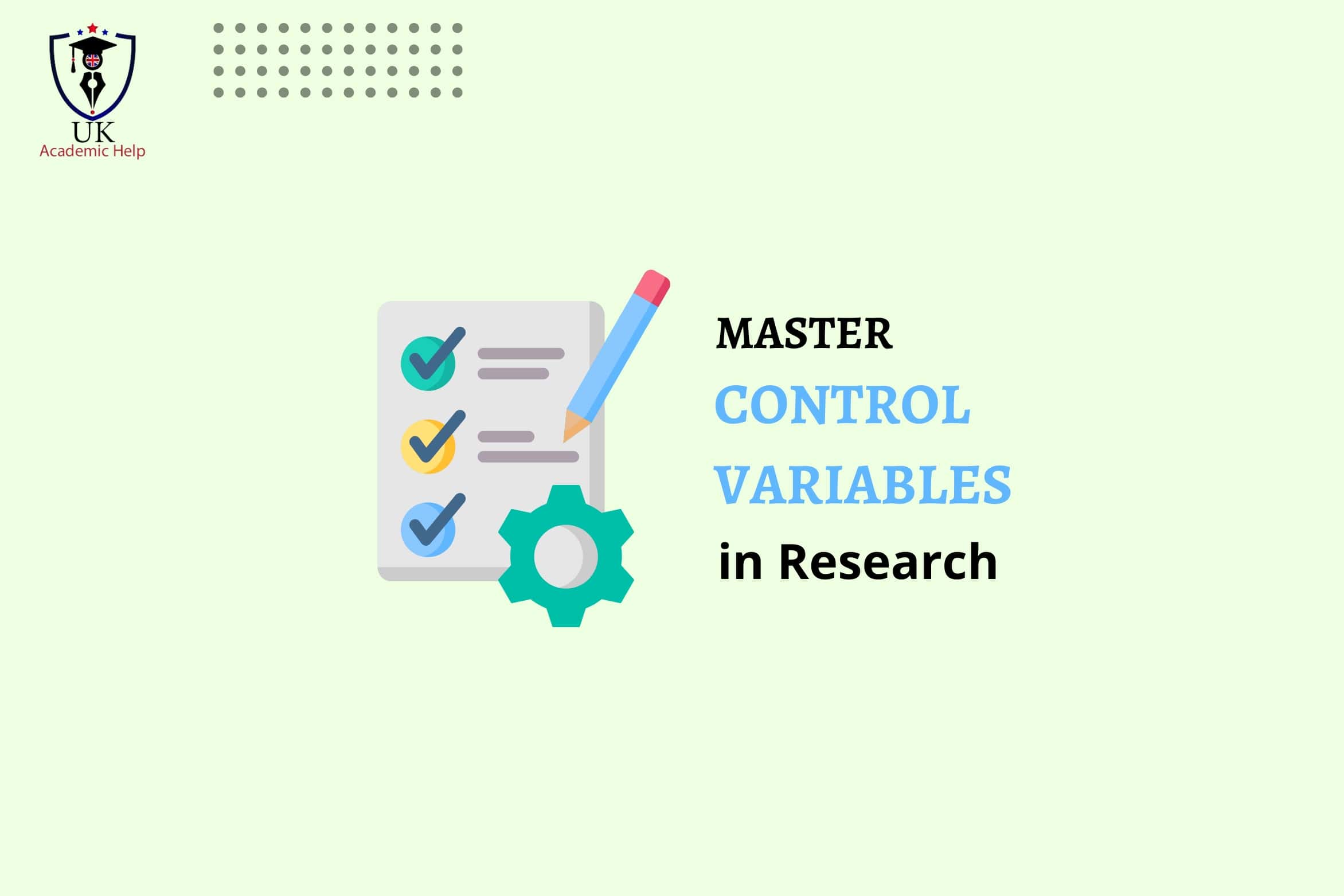Table of Contents
- 1 1. Understand the Problem with AI-Generated Content
- 2 2. Step-by-Step Process to Remove AI Content from Assignments
- 3 3. Paraphrasing AI-Generated Content
- 4 4. Use Tools to Detect AI in Your Assignment
- 5 5. Humanize the Tone and Style of Writing
- 6 6. Expand on AI-Generated Ideas
- 7 7. Use AI to Help, But Don’t Rely on It
- 8 8. Optimize Grammar and Syntax
- 9 9. Use Personal Pronouns and Address the Audience Directly
- 10 10. Remove Overused AI Terms and Phrases
- 11 11. Provide Clear Citations and References
- 12 12. Incorporate Your Unique Insights and Experience
- 13 13. Enhance the Structure and Flow
- 14 14. Personalize the Style for Your Audience
- 15 15. Review and Revise Your Assignment Thoroughly
- 16 16. Use Proper Citations and References
- 17 Conclusion
As AI tools continue to evolve, students are increasingly using them for assistance in their academic work. While AI can help with research, writing drafts, and generating ideas, it often results in assignments that may lack personal touch and originality.
For students seeking to ensure that their assignments are truly their own, the need to “remove AI” becomes crucial. But how can one effectively remove AI from an assignment while maintaining quality and integrity?
In this guide, we’ll explore practical strategies and actionable steps you can take to eliminate AI-generated content from your assignments, making them genuinely reflective of your own work and understanding.
Whether you’re writing an essay, a case study, or a research paper, our aim is to help you refine your assignment and make it shine in its original form. Follow these steps to remove AI-generated content, ensuring your work meets academic standards and avoids the pitfalls of plagiarism or dependence on automated tools.
Let’s dive in and explore how to remove AI from your assignments effectively.
1. Understand the Problem with AI-Generated Content
Before diving into how to remove AI from your assignment, it’s important to first understand what makes AI-generated content problematic for academic work. AI tools can generate text based on algorithms that predict patterns in the data they’ve been trained on. This means the content might seem well-structured and factually correct, but it lacks personal nuance, critical thinking, and a voice that is unique to you as a student.
AI can also sometimes insert generic ideas or overlook specific course instructions that make the content relevant to your assignment. This is why, while using AI as a starting point is common, removing AI from your final submission is necessary to make the assignment feel authentic.
For students who want to make sure their assignments are completely original, it’s important to understand how AI-generated text works and how to spot it in your writing. AI often produces repetitive language and might struggle with producing a coherent narrative or argument. One of the main tasks of “removing AI” from your assignments is to ensure the text flows naturally, with appropriate transitions, logical structure, and unique insights.
2. Step-by-Step Process to Remove AI Content from Assignments
2.1. Review Your AI-Generated Content
The first step in removing AI from your assignment is reviewing what portions were generated by AI. Check for patterns or phrases that seem out of place or too mechanical. A good tip is to read your content out loud—AI-generated text can often sound disjointed, and unnatural wording will be easier to spot.
If you’ve used AI to generate an initial draft or get ideas, start by pinpointing these sections. Sometimes, AI tools use phrases that lack the depth or originality of human-written content. For instance, sentences like “This essay will explore…” or “It is important to note that…” are common placeholders often inserted by AI, but they can make your writing sound generic.
2.2. Add Your Own Voice and Insight
Once you’ve identified the sections that feel too robotic, it’s time to make them your own. Think about how you would explain the topic in your own words. Incorporating your own experiences, ideas, and reflections will help you bring authenticity to your assignment. This will not only eliminate AI influence but also add depth to the content.
For example, instead of accepting AI-generated examples or arguments as they are, rephrase them or provide real-life case studies that reflect your understanding of the topic. Adding personal analysis or critiques also enriches the content and makes it clearer that it is your work, not just AI-generated filler.
2.3. Use the Human Touch
AI struggles with producing content that resonates on an emotional or personal level. Adding your personal experiences or referencing specific academic concepts from your course will give your assignment a unique and human quality. A case study or personal anecdote can make all the difference in removing AI’s presence.
When you add your voice to the content, not only does it sound more authentic, but it also enriches your writing and shows the depth of your knowledge. For example, when working on an assignment related to business strategy, personal insights into a company you’ve researched can create a more meaningful connection with the content.
3. Paraphrasing AI-Generated Content
A significant part of removing AI from your assignment is ensuring that the content is paraphrased effectively. AI tools often rely on data and templates, which means that the ideas presented might be too close to the source material. Therefore, paraphrasing is an essential step to make your content genuinely unique.
3.1. Rewriting Paragraphs with Your Own Words
To paraphrase effectively, read the AI-generated content and summarize it in your own words, retaining the original meaning but changing the structure of the sentences. Avoid simply swapping out words for synonyms—this can still be detected as AI. Instead, focus on altering the sentence flow and expressing the ideas in your own style.
For instance, if the AI writes, “In today’s fast-paced world, the need for efficient project management is more crucial than ever,” you might rewrite it as, “Effective project management has become increasingly essential in our rapidly evolving work environments.” This approach helps your writing sound more natural and individualized.
3.2. Adding Citations and References
One of the easiest ways to remove AI influence from your work is by supporting the arguments with credible sources. Use your textbooks, academic papers, and online databases to find references that back up your claims. When you add your own citations, it not only adds originality to the content but also helps you ensure that it meets the academic rigor required for assignments.
Make sure you properly cite all sources, whether you’re using direct quotes or paraphrasing. Citing sources demonstrates that you’ve engaged with the material and have gone beyond AI-generated knowledge.
4. Use Tools to Detect AI in Your Assignment
In some cases, it may be difficult to spot AI-generated content manually, especially if the text has been paraphrased well. To ensure your work is free from AI, you can use plagiarism checkers and AI detection tools.
4.1. AI Detection Software
There are various online tools designed to detect AI-generated content. These tools analyze the structure and language patterns to determine if the text was written by a machine. Using such tools can help you pinpoint sections of your assignment that still have an AI presence. Once identified, you can go back and manually revise these sections.
For example, tools like GPT-2 Output Detector or AI Text Classifier by OpenAI can help you assess if portions of your work are AI-generated. Using these tools, you can be more confident that your assignment is free from AI influence.
4.2. Plagiarism Checkers
In addition to AI detection tools, plagiarism checkers like Turnitin or Copyscape can be invaluable. AI-generated content might contain reused phrases from other sources, so using plagiarism detection can help ensure that your work remains original and does not inadvertently copy ideas from others.
Relevant Read: Writing plagiarism free assignments
5. Humanize the Tone and Style of Writing
One key factor in making AI-generated content appear more human-like is adjusting the tone and style of the writing. AI-generated text often lacks the nuances and emotions that human writers bring to their work. To avoid sounding robotic, try to infuse your writing with your personal voice and perspectives.
5.1. Injecting Personal Experience
Adding examples from your personal experiences or insights can make a huge difference. While AI content is based on generalized data, human writers can bring in specific examples or viewpoints that demonstrate a deeper understanding of the subject matter. This not only adds authenticity to the assignment but also ensures it’s aligned with your unique voice.
For instance, if you’re writing about time management in a business assignment, including a personal anecdote about how you effectively managed a project or deadline can make the content stand out and feel more personal.
5.2. Vary Sentence Length and Structure
AI-generated content tends to have repetitive sentence structures, making it sound monotonous. Humans naturally vary their sentence lengths and use a mix of complex and simple sentences. As you revise your assignment, experiment with different sentence patterns. Adding rhetorical questions, exclamatory sentences, or even brief sentences within longer ones will make your work read more naturally.
6. Expand on AI-Generated Ideas
Another strategy to remove AI content is by expanding on the ideas provided by the AI. Most AI content tools generate text that might be superficial or too brief. To make it unique and more engaging, you should deepen the analysis or provide a more comprehensive explanation of the ideas.
6.1. Provide Detailed Explanations
For example, if the AI generates a paragraph that briefly touches on a topic like the impact of climate change on agriculture, you can expand on this by including specific examples, case studies, or scientific findings. This will not only make the content more informative but will also increase the word count and provide a richer context for the reader.
When expanding on an idea, be sure to include references to reputable studies, industry reports, or expert opinions that support your discussion. This helps establish credibility and makes your assignment more academically rigorous.
6.2. Add Relevant Data and Statistics
AI-generated content often lacks hard data or statistics that can bolster an argument. By incorporating up-to-date data into your assignment, you not only remove any AI trace but also present more compelling and accurate content. For instance, if discussing the economic impact of renewable energy, including recent statistics on job growth or investment in clean energy sectors will significantly improve the quality and authenticity of the assignment.
7. Use AI to Help, But Don’t Rely on It
AI tools can be extremely useful in generating ideas, structuring content, or even refining grammar. However, when it comes to finalizing assignments, relying too heavily on AI is not ideal. Instead, view AI as a supplementary tool that aids in your writing process rather than replacing it.
7.1. Use AI for Idea Generation and Outline Creation
If you’re stuck on how to approach a topic, you can use AI tools to generate brainstorming ideas or a rough outline. This can serve as a good starting point for your assignment, but the bulk of the writing should be done by you. Once you have a solid outline, you can use your own insights, research, and expertise to flesh out the content.
7.2. Edit AI-Generated Text for Accuracy and Personalization
Even if you use AI for generating initial drafts, be sure to edit and revise the text thoroughly. Look for areas where the AI’s tone might be too formal or where sentences are overly repetitive. Take the time to add your personality to the writing. The editing process will help you ensure that the content flows naturally and meets your academic requirements.
To avoid any confusion and to ensure your assignment is up to academic standards, visit UK Academic Help for professional writing services that can help you eliminate any AI-related concerns and guarantee unique, high-quality content.
8. Optimize Grammar and Syntax
AI tools are often good at generating text with correct grammar, but they may not always capture the subtle nuances of the language that make writing feel more human. Simple corrections or adjustments to grammar and syntax can make your assignment feel more authentic and personalized.
8.1. Use Active Voice
AI-generated text can often be passive, which may sound robotic and less engaging. To make your writing more compelling, use an active voice where possible. For example, instead of saying “The report was analyzed by the team,” use “The team analyzed the report.” Active voice makes the sentence direct, clear, and more personal, adding depth to the content.
8.2. Check for Wordiness
AI content can sometimes be overly wordy, adding unnecessary filler words. While it’s important to be thorough, being concise is key to maintaining the quality of your assignment. Review your work for redundancy or phrases that could be simplified. This will improve readability and remove any AI-like fluff that may have been added.
9. Use Personal Pronouns and Address the Audience Directly
Human writing often uses personal pronouns like “I,” “you,” and “we” to establish a connection with the reader. AI-generated text, however, might avoid personal pronouns or use them in a detached way. One way to humanize your content is by addressing the reader directly, whether it’s “you” (the student) or discussing shared experiences or challenges that students might encounter.
For instance, if you are writing about the importance of time management in assignments, you could say, “As a student, managing your time effectively is crucial for meeting deadlines” instead of a generic statement like “Time management is important for students.”
10. Remove Overused AI Terms and Phrases
AI tools may repeat certain phrases or structures too often, making the writing sound mechanical. Reviewing the content for such terms and replacing them with more natural alternatives can make your writing feel more unique.
10.1. Replace Repetitive Phrases
AI text tends to rely on certain filler words or common phrases, like “in this article,” “as a result,” or “it is important to note.” While these can be appropriate at times, overusing them can diminish the flow of the assignment. Replace these with more varied expressions to maintain the reader’s interest.
10.2. Avoid Formulaic Language
In some cases, AI writing might rely on overly formulaic phrases that sound generic. Human writers have a way of adapting language based on the specific context of the assignment, so avoid overused structures and make sure your writing fits the topic.
11. Provide Clear Citations and References
AI-generated content often lacks proper citations, which are essential for academic writing. To improve the credibility of your assignment, it’s vital to back up your arguments and ideas with sources from credible references. This not only helps with the authenticity of the content but also shows your understanding of the subject matter.
11.1. Incorporate Proper Citations and References
Be sure to use credible sources like academic papers, books, and reputable websites to back up the points you’re making in your assignment. Citing sources properly gives your work authority and shows that you’ve engaged with the subject in a meaningful way.
11.2. Use Scholarly Sources to Back Claims
Whenever possible, use scholarly journals and peer-reviewed sources to support the claims in your assignment. AI-generated content may lack these authoritative references, so you should replace general statements with specific data, research, or studies that are well-respected in the field.
12. Incorporate Your Unique Insights and Experience
One of the most effective ways to remove the AI feel from your assignment is to infuse it with your own insights, experience, and perspective. AI-generated content can sometimes come across as detached or impersonal because it doesn’t have the capacity to draw from personal experience in the same way humans do. As a student, your unique views and personal experiences are crucial components of academic writing, especially in assignments that require analysis or critical thinking.
12.1. Draw on Class Discussions and Real-Life Experiences
If your assignment requires you to apply theories or concepts, think about how these relate to your own academic journey or real-life experiences. Bringing in examples from class discussions, previous courses, or even personal anecdotes can add a unique touch that will not only remove the AI impression but also demonstrate your critical engagement with the subject matter.
12.2. Add Your Analysis and Interpretations
AI can replicate data and summarize existing knowledge, but it can’t always provide fresh insights or opinions. Therefore, adding your analysis and interpretation of information will make your assignment stand out. Instead of just repeating what others have said, offer your own conclusions and explanations, supported by evidence.
13. Enhance the Structure and Flow
AI-generated content may lack the intuitive, logical flow that human writers can naturally create when organizing ideas. Properly structuring your content and ensuring it flows smoothly from one point to the next is key to making it sound like genuine human writing.
13.1. Organize Your Thoughts in a Logical Sequence
Whether you’re writing an essay, case study, or research paper, ensure that your ideas progress in a logical order. Start with a clear introduction, followed by well-organized body paragraphs, and finish with a strong conclusion. Each section should build on the previous one, so your reader is guided through the material seamlessly.
13.2. Use Transitional Phrases to Improve Cohesion
Transitional phrases like “in addition,” “however,” “on the other hand,” and “for example” can help to connect your ideas and make the text more readable. These subtle transitions create natural breaks between sections and guide your reader through the argument, making the content feel more coherent and human-like.
14. Personalize the Style for Your Audience
Every piece of writing should have a tone and style that resonates with its intended audience. In the case of academic assignments, students should aim to match the level of formality and style that is expected by their professors or academic institutions. AI-generated content might not fully align with the specific requirements for your assignment’s style, but you can adjust this yourself.
14.1. Match the Tone to Your Discipline
For example, writing for a business or management course requires a professional, formal tone, while a creative writing assignment might allow for a more relaxed and conversational style. AI-generated text may not always reflect the subtle differences in tone that different subjects require, so be sure to adjust the style according to the expectations of your specific discipline.
14.2. Use Academic Language Appropriately
In academic writing, using formal, precise language is key. AI-generated text may sometimes sound casual or overly simplified. You can elevate the writing by choosing the right academic vocabulary and avoiding slang or overly colloquial expressions that may appear in AI-written content.
15. Review and Revise Your Assignment Thoroughly
AI content, though it can be written quickly, often lacks the polish and attention to detail that human writing receives during the revision process. To truly remove any AI markers from your assignment, it’s essential to thoroughly review and revise your work. Revisions allow you to identify awkward phrasing, unclear arguments, and areas where more detail or depth is required. This step helps to improve readability, flow, and the overall quality of your writing.
15.1. Check for Clarity and Precision
AI-generated content may contain vague or overly complex sentences that confuse readers. As you revise, focus on ensuring that your arguments are clear, concise, and directly address the assignment prompt. Break up long sentences into shorter, more manageable ones to enhance readability.
15.2. Proofread for Grammar and Spelling
AI can produce text that’s technically correct but might still include occasional grammar or spelling mistakes. It’s essential to manually proofread your assignment to ensure it’s error-free. Many AI tools overlook subtle nuances of language, so a second set of human eyes can help catch these small mistakes that could detract from the quality of your work.
Relevant Blog: How To Do Assignments In The UK?
16. Use Proper Citations and References
AI can assist in gathering information, but it can’t always cite sources correctly or adhere to specific citation styles required by your institution. When removing AI influence from your assignment, make sure that all of your references are correctly cited according to the required style, whether it’s APA, MLA, Chicago, or another citation format. This step not only ensures academic integrity but also demonstrates your commitment to scholarly work.
16.1. Include In-Text Citations
Whenever you reference a study, book, article, or other academic sources, make sure to properly cite them within your text. This not only strengthens your arguments but also aligns with the academic standards expected of you.
16.2. Provide a Full Reference List
Alongside in-text citations, ensure that your assignment includes a complete and correctly formatted reference list. This adds authenticity to your work and makes it clear that your research is based on credible, scholarly sources.
Conclusion
Removing AI from your assignment is crucial for ensuring that your work is original, relevant, and fully aligned with academic standards. By following the steps outlined above, you can transform AI-generated content into authentic and high-quality writing that reflects your personal voice and academic expertise. Remember, the key to great writing is not just following the steps to remove AI but also engaging with the material, offering your insights, and ensuring that your final product is something you can be proud of. Whether you’re struggling with structure, analysis, or style, consider seeking professional assistance to enhance your work and achieve academic success.
Don’t let AI define the quality of your assignment – use it as a tool, but always apply your critical thinking, knowledge, and skills to make the work truly your own.








Leave A Comment